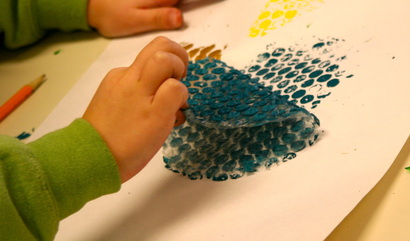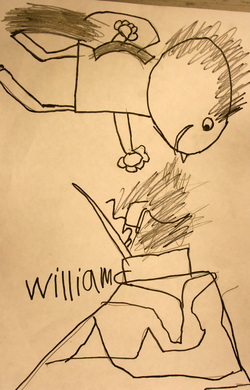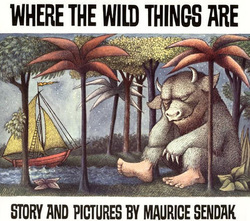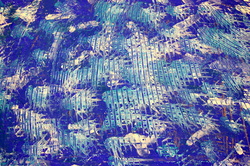 I would love to say that I came up with this lesson - however, it isn't true. I did this lesson back when I was doing my first placement for student teaching. I was in a rougher school in the area, with a room full of 8th graders that were one of the worst groups the school had seen. I was 5'2" and not really super confident in my ability to teach a crammed room of rough 8th grade students that were taller than me -- so instead of making my own lesson I taught a lesson my cooperating teacher had already set up. Logos.
I would love to say that I came up with this lesson - however, it isn't true. I did this lesson back when I was doing my first placement for student teaching. I was in a rougher school in the area, with a room full of 8th graders that were one of the worst groups the school had seen. I was 5'2" and not really super confident in my ability to teach a crammed room of rough 8th grade students that were taller than me -- so instead of making my own lesson I taught a lesson my cooperating teacher had already set up. Logos.I have since morphed her lesson into a unit for my 5th grade students.
Day 1:
 I start out with a slideshow of logos that have no words. I tell students I want them to keep track WITHOUT talking of how many of these logos they know. We go through the slideshow a second time and then students whisper what each company is.
I start out with a slideshow of logos that have no words. I tell students I want them to keep track WITHOUT talking of how many of these logos they know. We go through the slideshow a second time and then students whisper what each company is.We briefly talk about what a logo is, why it is important to a company and consumer. I then explain they will be creating their own personal logo.
:Insert gasps, and whispered feelings of 'cool':
 I explain they will be brainstorming today to find their logo. (I am super against worksheets in the art room - but for this I needed a way to help and guide their brainstorming). I pass out a worksheet in which they have to write their first initial 10 different ways. Some students groan at this point, because apparently 10 is a lot -- I quickly show them on the board that simply writing their letter lower case, upper case, and then the same in bubble is already 4, and they all relax.
I explain they will be brainstorming today to find their logo. (I am super against worksheets in the art room - but for this I needed a way to help and guide their brainstorming). I pass out a worksheet in which they have to write their first initial 10 different ways. Some students groan at this point, because apparently 10 is a lot -- I quickly show them on the board that simply writing their letter lower case, upper case, and then the same in bubble is already 4, and they all relax.After 10 of their first initial they do 10 of their second initial. Last but not least they do 10 different ways to combine the letters they have done. I of course don't keep them confined to the letter they have done, but it gives them an out if they can't or won't think of anything past what they have already done.
 At this point hopefully they find a combination they REALLY like, though sometimes they need a little help to think past the letters themselves. If they find one they like I have them turn over the paper and try that design slightly different 4-6 times -- ie. changing the thickness of the lines, the angle of the lines, how long certain lines are. When they are confident in what they want we move to the next step.
At this point hopefully they find a combination they REALLY like, though sometimes they need a little help to think past the letters themselves. If they find one they like I have them turn over the paper and try that design slightly different 4-6 times -- ie. changing the thickness of the lines, the angle of the lines, how long certain lines are. When they are confident in what they want we move to the next step.Day 2 -- Formatting
 The next class time we talk about formatting. My students have already had practice at formatting in the beginning of the year - so a quick reminder of formatting and away they go. I, again, have created a sheet to help guide their exploration for a final logo. The worksheet has a circle, triangle, square, rectangle and oval on it. The students must take their favorite design from the previous class and mold/bend it into each shape. Most students claimed they liked it in a square until they got to the oval or circle. Once they did this and decided which shape they liked best they flipped their paper over and drew it 4 more times. The students then started to work on color combinations for their logos.
The next class time we talk about formatting. My students have already had practice at formatting in the beginning of the year - so a quick reminder of formatting and away they go. I, again, have created a sheet to help guide their exploration for a final logo. The worksheet has a circle, triangle, square, rectangle and oval on it. The students must take their favorite design from the previous class and mold/bend it into each shape. Most students claimed they liked it in a square until they got to the oval or circle. Once they did this and decided which shape they liked best they flipped their paper over and drew it 4 more times. The students then started to work on color combinations for their logos.Day 3 -- Final Logos
 The final day!!! I printed out large shapes: square, circle, oval, rectangle, and triangle. The students picked their shape, drew their logo, colored, cut it out, glued it onto a piece of choice construction paper. I made a HUGE deal out of how awesome these should be. I told them that a marker that was drying out was not an acceptable reason for why it wasn't colored well. Poor cutting and glue bulging out the sides was not acceptable. To really drive home my expectation if there was poor coloring, cutting, or glueing they would need to START OVER.
The final day!!! I printed out large shapes: square, circle, oval, rectangle, and triangle. The students picked their shape, drew their logo, colored, cut it out, glued it onto a piece of choice construction paper. I made a HUGE deal out of how awesome these should be. I told them that a marker that was drying out was not an acceptable reason for why it wasn't colored well. Poor cutting and glue bulging out the sides was not acceptable. To really drive home my expectation if there was poor coloring, cutting, or glueing they would need to START OVER. Their logos are AMAZING!!! Not only do they look fantastic but the kids are super proud of them!
Okay, so I haven't figured out how to attach word documents or PDF files for download - but for now here are pictures of my brainstorming worksheets:


















